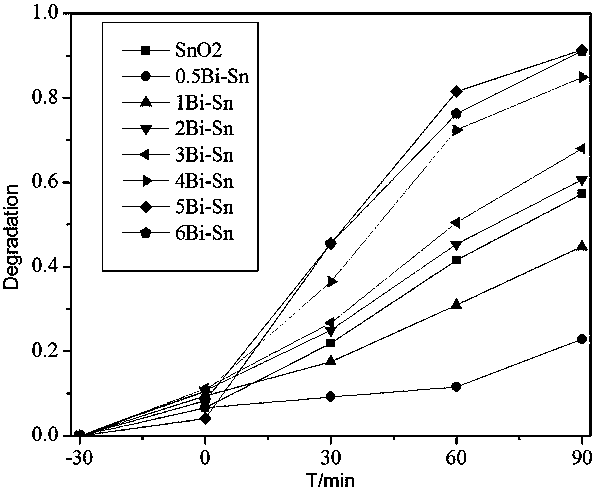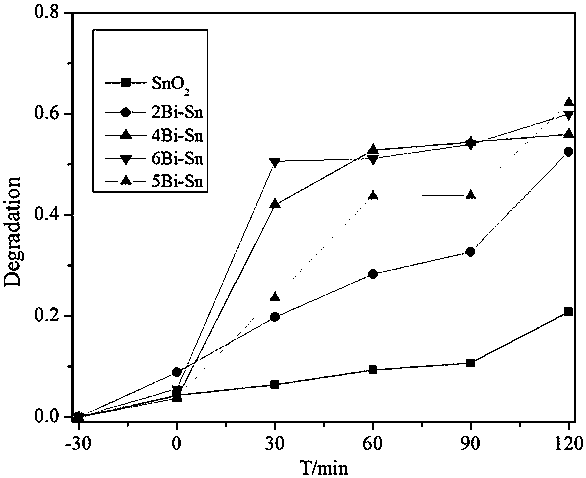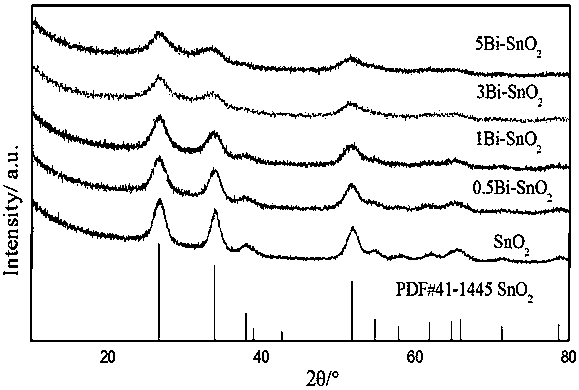Preparation method of bismuth-doped tin oxide photocatalyst capable of efficiently degrading dyestuff and antibiotic wastewater
A technology of antibiotic wastewater and photocatalyst, which is applied in the field of synthesis of composite photocatalytic materials, to achieve the effects of stable performance, wide absorption spectrum range and low cost
- Summary
- Abstract
- Description
- Claims
- Application Information
AI Technical Summary
Problems solved by technology
Method used
Image
Examples
Embodiment
[0015] Bi(NO 3 ) 3 ·5H 2 O (0.5mmol, 1mmol, 2mmol, 3mmol, 4mmol, 5mmol, 6mmol) were respectively dissolved in 15mL dilute nitric acid solution to obtain a transparent and clear solution A, wherein the dilute nitric acid solution was prepared from commercially available concentrated nitric acid and deionized water at a volume ratio of 1:10 Prepared, then 3mmol Na 2 SnO 3 4H 2 O was dissolved in 5mL deionized water to obtain solution B, then solution B was added to solution A under stirring conditions, deionized water was added to make the total volume of the mixed system 30mL, and the mixed system was transferred to 50mL polystyrene after stirring for 30min. In a vinyl fluoride reaction kettle, put it in a constant temperature oven at 180°C to react for 24 hours. After the reaction is completed, it is naturally cooled to room temperature, centrifuged, washed with deionized water and ethanol in turn, and then dried in a constant temperature oven at 60°C for 12 hours to obtai...
PUM
 Login to View More
Login to View More Abstract
Description
Claims
Application Information
 Login to View More
Login to View More - R&D
- Intellectual Property
- Life Sciences
- Materials
- Tech Scout
- Unparalleled Data Quality
- Higher Quality Content
- 60% Fewer Hallucinations
Browse by: Latest US Patents, China's latest patents, Technical Efficacy Thesaurus, Application Domain, Technology Topic, Popular Technical Reports.
© 2025 PatSnap. All rights reserved.Legal|Privacy policy|Modern Slavery Act Transparency Statement|Sitemap|About US| Contact US: help@patsnap.com



